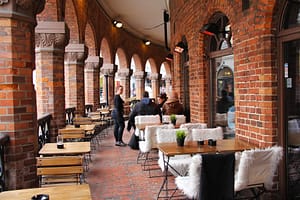Oslo is one of the world’s largest capitals in terms of area, but only 20 percent of this land mass has been developed – the remainder consists of parks, protected forests, hills, and hundreds of lakes. Parks and open spaces are an integral part of Oslo’s cityscape, and are easily accessible from almost anywhere in the city. The center is a joy to explore on foot thanks to the numerous pathways and trails connecting its public spaces, as well as its many pedestrian-friendly areas, including the city’s main street, Karl Johans gate. Stretching from Oslo Central Station near the waterfront all the way up to the Royal Palace, this wide avenue passes many of Oslo’s tourist attractions, including the palace, the National Theatre, the old university buildings, and Oslo Cathedral. Regularly ranked as one of the best cities in the world in which to live, Oslo boasts a rich cultural scene and numerous things to do, and is famous for its theater, museums, and galleries.
Oslo has earned the honour of being named European Green Capital for 2019, via one of the lowest carbon footprints in the world, excellent and well-patronised public transport, and a real commitment to sustainable food production and green space. The city is blessed with a large number of bucolic parks, and the Oslofjord’s waterways and islands are just minutes away from the centre, as are the ski slopes and forests of Nordmarka. Surrounded by mountains and sea, this compact, cultured and fun city has a palpable sense of reinvention.

